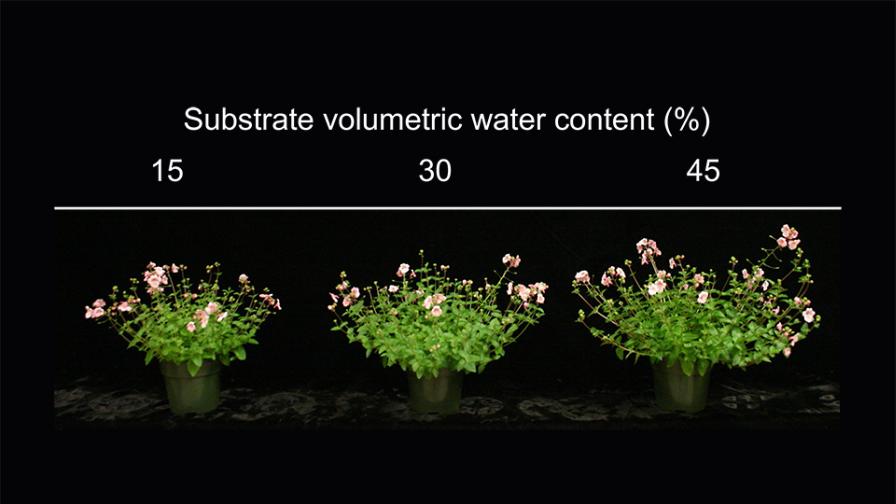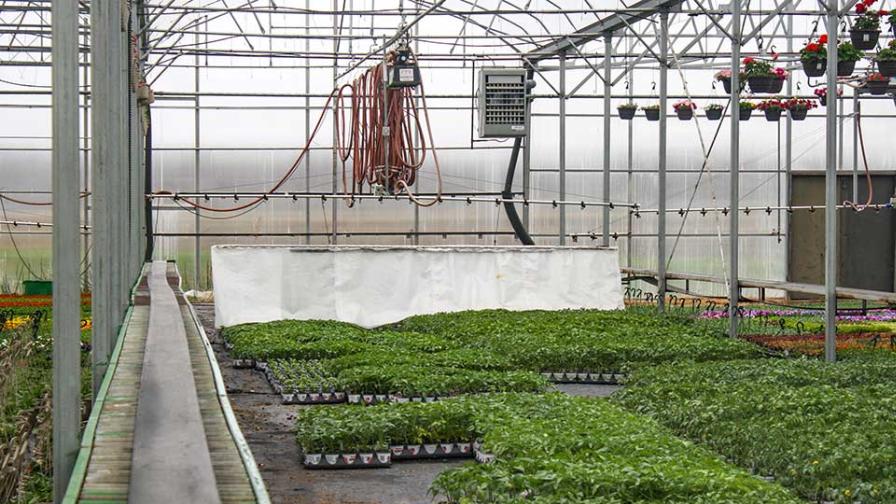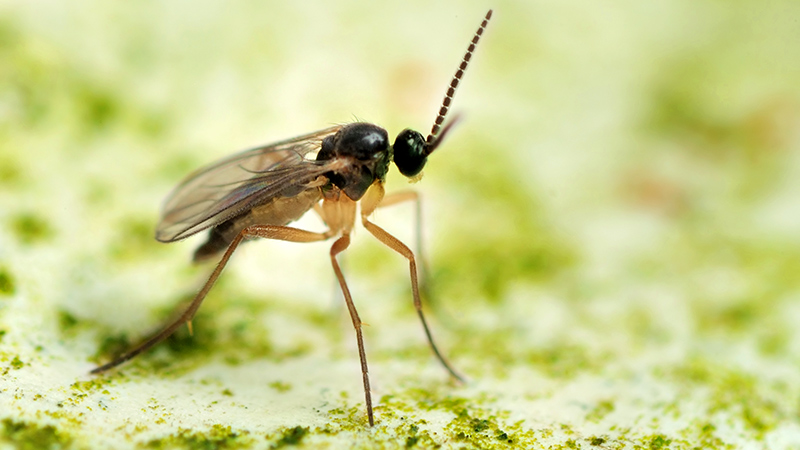A Non-Chemical Approach To Controlling Plant Growth
Controlling plant growth is perennially a challenge for containerized crop production. Plant growth regulators (PGRs) are an incredibly useful tool. However, wouldn’t it be helpful to have more tools in your toolbox to control height?
This article will review some of the most effective non-chemical methods of controlling unwanted plant growth.
Cultivar Selection
One of the opportunities for controlling plant growth can occur when selecting the cultivars for production. One approach to producing smaller plants in containers is by selecting more compact genetics. However, this strategy should be used carefully and with mindfulness. As an example, there are great compact lantana cultivars available, but these compact cultivars should not be selected for producing lantana that is going to be used in larger landscape plantings. Compact cultivars are better suited for hanging baskets and patio pots.
Restricting Irrigation
Drought is the original growth regulator. There are several benefits to growing on the dry side, including reduced water use and fewer disease incidences. Additionally, plants grown drier are smaller than those grown more wet. The ability to grow dry will depend on a few factors. If you are hand watering, the ability to grow dry is directly related to the skill of the grower, whether it is to hold off on watering or the ability to water before damage occurs. The use of automated irrigation, combined with soil moisture sensors, makes growing drier much easier.

By restricting irrigation and growing drier, plants grown with less moisture in the substrate can be more compact than those grown more wet, as seen with these nemesia.
Photo by Christopher Currey
Reducing Nitrogen and Phosphorous
Reducing the amount of fertilizer provided to plants can suppress excessive growth. For example, it is not uncommon to see 200 to 300 ppm nitrogen (N) recommended for finishing vegetative propagated specialty annuals.
However, one important consideration when lowering N concentrations is the impact on micronutrient concentrations, since lowering N concentrations will reduce concentrations of everything else, including micronutrients for producers using a single-bag complete fertilizer. While this may not be problematic for micronutrient-efficient (high pH) crops such as marigold and geranium, it may be for micronutrient-inefficient (low pH) crops such as calibrachoa, petunia, and others.
Consider using fertilizers with higher concentrations of micronutrients so sufficient amounts are provided even at low N concentrations, or supplement with a micronutrient fertilizer.
In addition to reducing the amount of N provided to plants to suppress size, restricting the amount of phosphorous (P) can also be an effective growth control strategy. Restricting P is not necessarily a new growth control strategy, as plug growers have widely adopted this approach to grow more compact seedlings. However, this is also a promising technique for finishing plants. When 150 ppm N is applied from a 15-5-15 fertilizer or 20-10-20 fertilizer, it is providing 22 or 33 ppm of elemental P (or 50 or 75 ppm of phosphate, P2O5, respectively). This is more than enough P to satisfy the requirements of most greenhouse plants. Providing from 2.5 to 10 ppm P (~6 to 23 ppm P2O5) usually provides growth control for finishing plants, but without any P deficiency symptoms, that could reduce marketability.
Modifying Air Temperature
We can use temperature a few different ways to control crop growth, but which approach is used depends on how the crop is growing. Sometimes excessive growth results from a crop finishing too early, and the excess or unwanted growth comes from holding the crop until the target sales date. By using reducing air temperatures and growing cooler, crop growth will slow down and reduce the amount of unwanted growth.
Although growing cooler will slow down plant growth rates, this is not always desirable. Instead, you may want to control plant size, but not the growth rate. In this case, the difference between the day and night air temperatures (DIF) can be altered. Mathematically, DIF = day temperature minus night temperature. As DIF becomes more positive, stem elongation is promoted, whereas stem elongation decreases as the DIF decreases. However, running a warmer night and cooler day can increase energy costs.
Therefore, a good alternative to a zero or negative DIF is to use a DROP or DIP. When using a DROP or DIP, the air temperatures are dropped at sunrise to lower temperatures than at night, then after two or three hours, the air temperature can rise to a normal day temperature. This allows growers to use a traditional warm day and cool night, which is more economical with respect to energy use, but the morning temperature drop results in a negative DIF response and inhibits stem elongation.

The growth of these containerized tomatoes is being controlled with brushing. Leftover pieces of shade cloth with aluminized reflective strips were sown together and attached to the boom to make brushing convenient and programmable.
Photo by Christopher Currey
Brushing
Another method to control plant growth is to utilize brushing. Brushing involves passing something over the top of a crop that comes into contact with plants and moves the stem and leaves, which results in more compact plants. As the frequency and duration of brushing increases, so does the amount of growth control. The material used to brush the plants varies widely, with some using PVC pipes or broom handles and others using shade cloth or sheets of plastic film. Regardless of what is used to brush plants, take care not to damage stems and foliage while brushing; determining the speed and force that is appropriate for brushing your crops will take some trial and error.
Takeaways
There is no doubt that PGRs are an effective tool for controlling plant growth. However, keep in mind the other non-chemical options available in suppressing unwanted growth. While none of these non-chemical techniques may be the silver bullet that PGRs are, the additive effect of integrating several of these strategies may achieve the growth control you are looking for in your crops.









